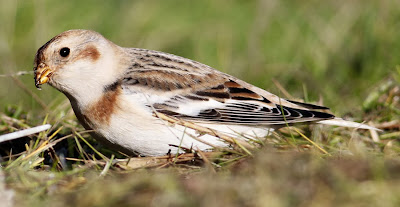Wednesday, December 14, 2016
Missing The Grey
Friday, November 29, 2013
More Snobs, Belated Phalarope
Back home the garden has been quiet for weeks on end, enlivened by a visit from a Treecreeper, a couple of sightings of a male Sparrowhawk, and the reason for the hawk, several feeding Goldfinch.
There’s more news soon, belated or not from Another Bird Blog.
Monday, November 23, 2009
Old Pictures, Old Tales
So for this evening I’ll post a few aged pictures coupled with a few ancient stories.
When I looked up the date of the first two pictures by referring to some old bird reports I was amazed by how old the transparencies were, how long I held onto them and how they managed to survive the ravages of time. I suppose it helps they were stashed away in the dark in little plastic boxes, and despite a few moves of home and the clearouts that came with pleas of “throw out that old rubbish”, which I resisted on the grounds of preserving vital historical information for future generations, they survived.
The first two show a Grey Phalarope from 26 years ago, September 1983 that turned up at Fairhaven Lake after rough weather. What was fairly remarkable about this bird was how confiding it proved to be, allowing close approach to within feet away as it sailed around the edge of the lake and took to wandering over the grassy areas. Within a few days of its arrival a Red-necked Phalarope was also blown in after a storm, as together the two species entertained the assembled watchers for a day or two. If I remember correctly, the new arrival wasn’t quite as obliging as its counterpart, probably the reason I don’t have a picture of the red-necked, but I do remember seeing them within a foot or two of each other feeding in the detritus of the lake’s surface. Even now I laugh about the somewhat garbled phone message I received at the time "Red-necked Fallahawk on Fairhaven Lake", still something of a household joke.

Maybe there is someone out there who has old slides of them both together. What a furore the same event might cause nowadays, but the resulting multitude and quality of digital pictures would be phenomenal in comparison with my tired old ex slides.
Recently there was a lot of interest shown in a Long-billed Dowitcher found locally near Cockersands and there were also a few others in the UK, but the next picture is of a Short-billed Dowitcher. I took this old photo slide in Ontario Canada in May 1989 where I became fairly familiar with the look and call of the species in the month that I spent there.
Later that year in September 1989 a dowitcher sp turned up at Marton Mere, Blackpool spending its initial time on the northern bank of the mere from where I and one or two others heard it call as it flew around a couple of times. From the diagnostic call, there was no doubt that this bird was a Short-billed Dowitcher, the dull, staccato but fastish Turnstone like “tuttuttut”, quite unlike the high pitched call of Long-billed Dowitcher.
The bird soon relocated to the mere island opposite the south bank where it was not only further away, but where it remained silent until it left later in the day. At its time on the island other observers convinced themselves, perhaps by default as the more common species to occur on this side of the Atlantic, that the bird must be a Long-billed Dowitcher. I believe that the bird was later “accepted” as a Long-billed Dowitcher which really didn’t concern me as I knew what I had seen and heard.
It was in subsequent years, especially in the 1990s, that separation of autumn long-billed and short-billed firmed up, but as they say, “Short-billed Dowitcher, it’s on my list”.
However for anyone with a particular interest in these two species I recommend the following read:
http://www.surfbirds.com/ID%20Articles/dowitchers1005/dowitchers.html
My thanks to Eurico Zimbres for the fantastic picture below of Short-billed Dowitchers, wow, what long bills short-billed have.
And my thanks to http://www.naturespicsonline.com/ for the equally stunning picture of Long-billed Dowitcher.
There was some reaction to my Bardsey memories of a few days ago from fellow Bardsey buffs, so just for them, here is another picture, Yellow-browed Warbler, instantly recognisable as being taken on Bardsey for them that know.


















.jpeg)








.jpg)












